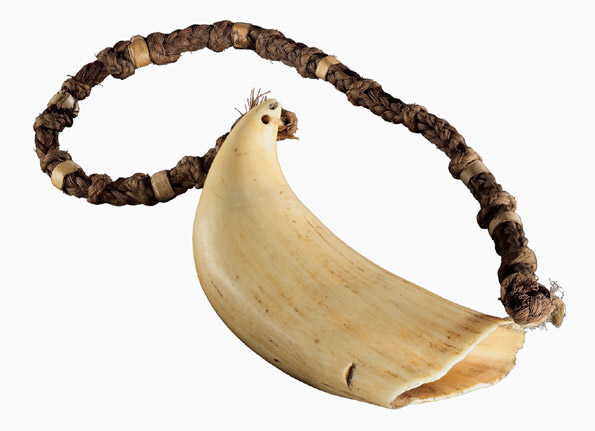Scootle has stopped supporting resources that use the Adobe Flash plug-in from 18 Dec 2020. Learning paths that include these resources will have alerts to notify teachers and students that one or more of the resources will be unavailable. Click here for more info.
 Tabua (ceremonial whale tooth), c1800s
Tabua (ceremonial whale tooth), c1800s
TLF ID R6105
This tabua, a kapkap (a forehead or shoulder ornament), is a large, cream-coloured whale tooth, originating from Fiji in the 19th century. It is perforated at the tip and the base for suspension. Its suspension cord is a tight, complex plait of sennit (coconut fibre) with ornamental knots at 2-3 cm intervals. Nine ornamental bands of pandanus leaf, about 1.0 cm wide, are dotted around the cord. The tooth measures 16.8 cm (h) x .70 cm (w) x 5.5 cm (d), and including the cord it measures 32.0 cm x 16.0 cm.
